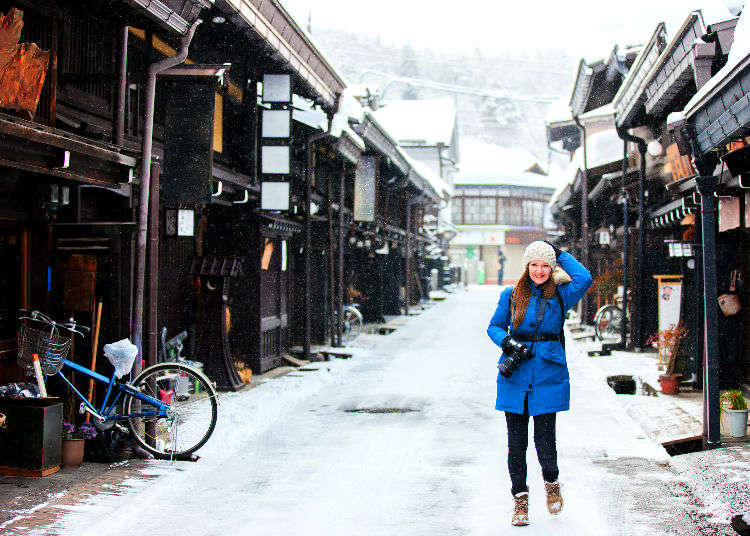
Tokyo is on the bucket list of travellers across the globe—and with good reason. Winter, spring, summer or fall, rain or shine, Japan's vibrant capital city is an absolute must-visit destination. In spite of the bracing weather that accompanies the arrival of Tokyo's winter, the city still manages to take on almost magical quality. From seasonal festivals and spectacular illuminations, to hot sake and traditional onsen hot springs, here are 10 reasons that we love winter in Tokyo!
1. Onsen
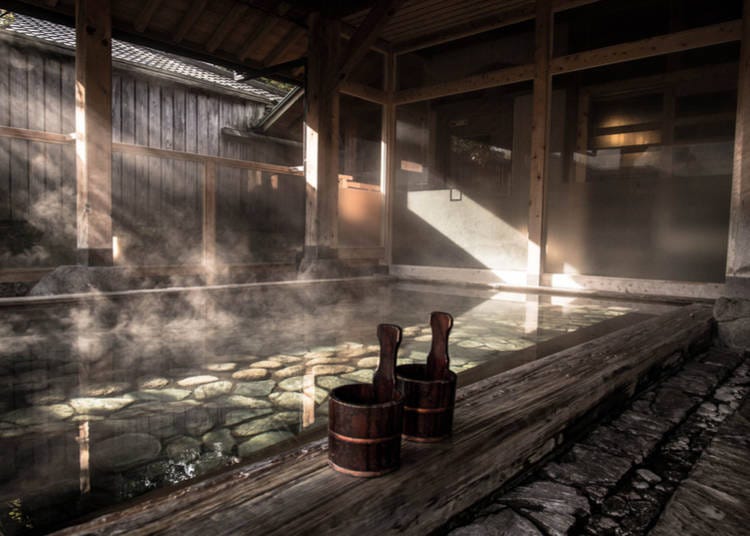
There's no better way to stave off the cold than to hop into one of Tokyo's myriad soothing hot springs—or Onsen as they are known in Japan. The word onsen typically referred to naturally heated pools of geothermal water that were used for public bathing. In English, however, it has become something of a blanket term that covers hot springs, public baths and even resorts where the springs are located. Thankfully, Tokyo is chock-full of onsen, and there's no better time to relax, chill out or destress in a therapeutic pool of steamy water, than in the gloomy depths of winter.
With water somewhere around 35-41 degrees Celsius (on average 25-30 degrees higher than the frigid outdoors), the sheer pleasure of sinking into a hot spring bath is almost unparalleled—especially after a long day of sightseeing (or indeed work). Just beware, Japanese onsen etiquette is very precise and must be adhered too.
This includes baths that are separated according to sex, no tattoos (or at the very least covering them up) and generally no clothes allowed either. But, as long as you abide by these pretty basic ground rules then you're good to go. Happy bathing!
2. Illumination Events
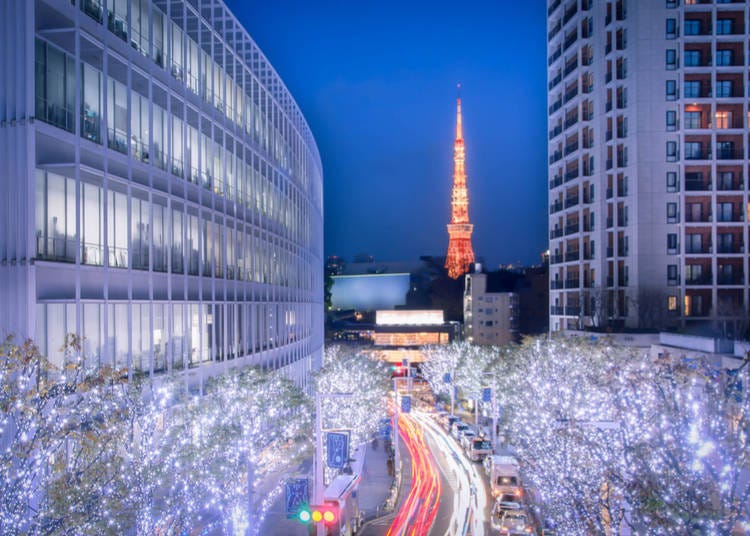
As the end of the year looms, Tokyo's rich autumnal foliage gives way to barren trees and naked shrubbery as the winter really sets in. The leafy hues of amber, crimson and ochre are almost immediately replaced by decidedly more artificial, yet no less beautiful, displays.
These come in the form of Tokyo's winter illuminations, where several areas around the city's downtown are turned into props from brightly-illuminated, festive wonderlands. This is the epitome of the aforementioned magical quality that Tokyo takes on in winter, making it hard not to get into the Christmas spirit.
From nightlife hubs like Ebisu, Roppongi and Ginza to parkland areas like Rikugien and Yoyogi, a cascade of bright lights and decorations turn the barren trees of Tokyo from lifeless trunks into a sea of light, providing the city streets with a breath-taking visual backdrop.
3. Festivals
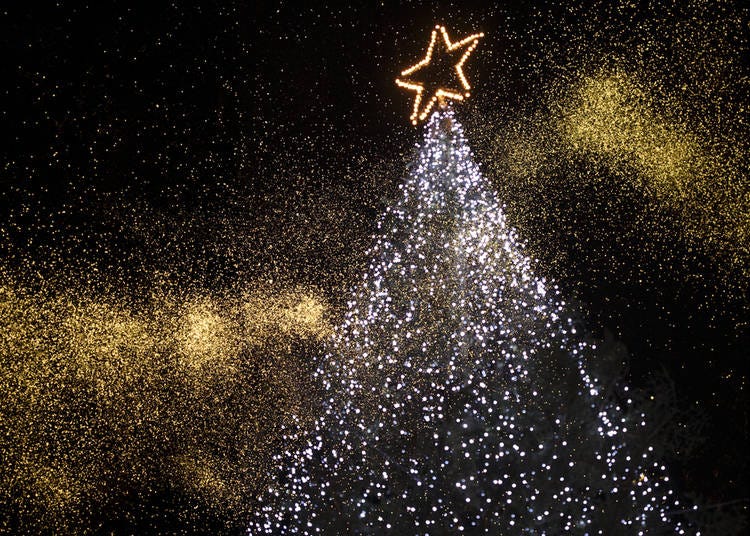
The Japanese love festivals, and so do we! If you go to a Japanese event, you can bet your bottom dollar that you're in for a treat. From traditional festivals that celebrate Japanese culture, to festivals that are aimed at tourists and expatriates, the Tokyo winter festival schedule is an eventful one, to say the least.
World Christmas Festival – A European-style continental market that takes place in the event area at Yoyogi Park. Dates are subject to change but generally it takes place in the run up to Christmas Day.
Winter Solstice Festival – Taking place at a shrine (Ana Hachimangu) and a temple (Houjouji) in Nishi Waseda is a festival that takes place on the darkest day of the year. You can buy hot food and drink as well as charms called <@ichiyo raifuku|i @>, which are meant to turn negatives into positives, a symbol of the days that are about to get brighter.
47 Ronin festival – This festival commemorates the famous 47 <@ronin|i @> (masterless samurai) who hold a legendary status within the prestigious annals of Japanese history. It takes place at Sengakuji Temple, central Tokyo, where the 47 ronin are buried.
4. Kotatsu

Think of kotatsu as Japan's answer to the fireplace. The kotatsu is a small table frame and top with a quilt, heavy blanket or duvet draped over the frame, containing a heating element inside—it is the centerpiece of practically every Japanese family's living room come winter. Families cuddle around their kotatsu on cold winter nights, using the blanket to trap the heat.
This also lends itself nicely to the Japanese communal style of dining—food sharing at dinner time becomes much easier with everyone sat in such close proximity to one another. Maybe you're wondering what happens to the top half of your body, whilst the legs and mid-section are snug under the blanket? Well, it may well be left cold. Traditional Japanese belief suggests that your stomach and abdominal area are, in essence, the body's "Command Central", where moods, vitality and spirituality reside. As such, keeping this sacred area of the body warm takes precedence over the top half!
Kotatsu are very easy to come by and many of the big internet retailers in Japan will stock them. Depending on the size and style of kotatsu that you want they can cost anywhere from less than ¥10,000 ($100), all the way up to ¥30,000 and beyond. They are also relatively easy to set up! So, once you've assembled it, you're living room heating needs are set for the long months of winter.
5. Hot Sake
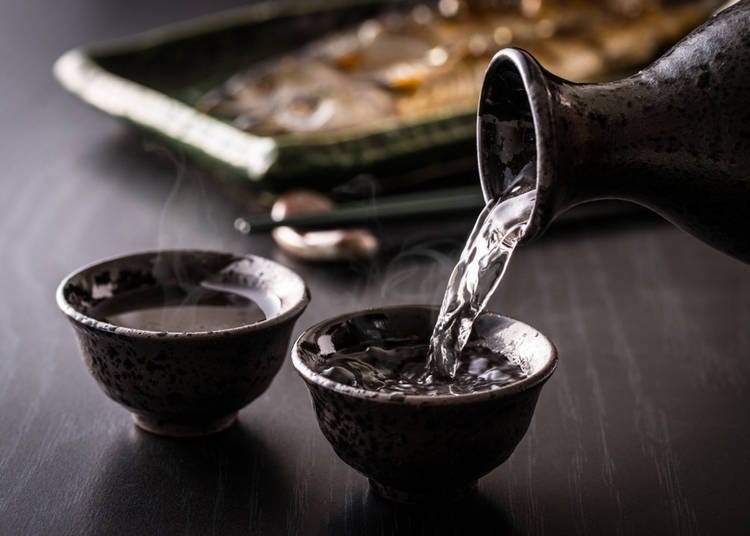
It's that time of year when one of Japan's favorite alcoholic beverages is served in heated flasks in izakayas, restaurants, bars and homes across the nation. From the perfume-like smells and deliciously sharp tastes, to the warmth generated from the flask transferring across to your cold hands, it is a quintessentially Japanese winter imbibing experience.
Winter is also Japan's main sake brewing season, thanks to a number of reasons including; rice that has had time to acclimate post-harvest, cool air that aides in the fermentation process and the arrival of fresh 'winter' water. So, with sake season in full-swing it would be rude not to indulge, no? Most restaurants will have sake or nihonshu (the official Japanese name) on the menu, and will heat it for you when the outdoor temperatures drop. But, if you want to try it yourself, there a plenty of sakes that are particularly good when heated—just ask your server for a serving of their recommendation (“osusume no atsukan o kudasai”). You can thank me later!
6. Shopping

Winter is easily one of the best times to shop in Tokyo. In the run up to Christmas, malls and shopping complex's around the city are bursting with festive cheer. Places like Ichibangai ("First Avenue") in the basement of Tokyo Station contains stores peddling all sorts of Japanese pop-culture trinkets, with a Christmas twist. Buying an anime-inspired teddy in a festive three-piece suit has never been easier! There are also tons of pop-up markets around Tokyo where you can get your last-minute Christmas shopping done. As the new year approaches the shopping frenzy continues with winter sales galore!
New Years is a special time for the Japanese and, of course, that would translate across to one of their favorite pastimes—shopping! Fukubukuro (literally meaning "lucky bag") is a lucky dip shopping event that features in retail stores across the nation. The concept which started over 100 years ago was intended to draw in large numbers of shoppers on New Year's Day. Basically, items are placed into a bag and then sealed. Customers can then purchase these bags without knowing the exact contents, but with the promise that what's inside is worth considerably more than the price indicates. This is one of the biggest events on Tokyo's retail calendar, with stores of every kind all across the metropolis offering fukubukuro options even as early as Christmas. If you want to bag a bargain, then this might well be the best chance you'll get all season!
7. Seasonal Foods
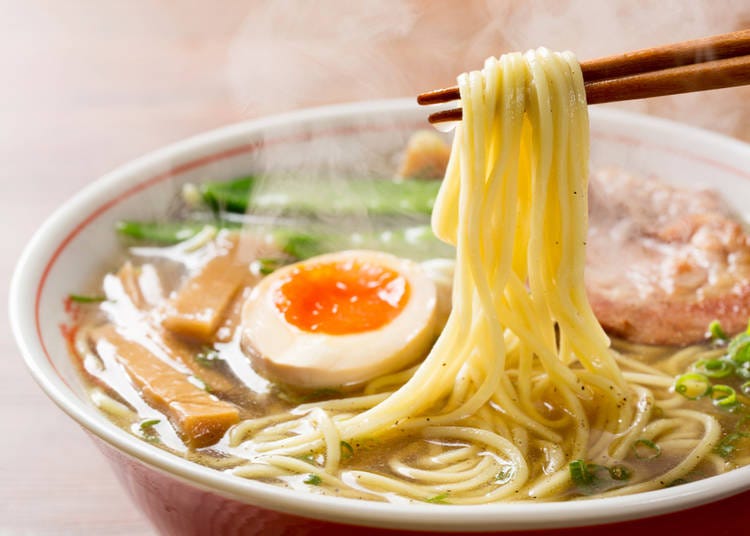
In a country that is renowned for its spectacular cuisine, it should come as no surprise that the arrival of a new season, brings of a smorgasbord of new produce and flavours to restaurants all across Tokyo.
Seasonal Fish: A variety of species of tuna, Pacific cod, monkfish, puffer fish, ice fish, shrimp and more, all feature heavily in Tokyo's eclectic winter seafood cuisine. There are a few species that are supposed to be particularly delectable at this time of year however;
Japanese Halibut – After spawning its offspring back in summer, it has usually eaten enough by the winter to have fattened itself up, giving it a wonderful taste at this time of year.
Crab – Feature heavily throughout the year, but some variations, like the snow crab, are at their best in winter.
False Kelpfish – a fleshy white fish that's a stalwart of winter, seafood hotpots.
If you want know more, or to try these fresh out of the Pacific then Toyosu Fish Market should be at the top of your to-do list!
Seasonal Fruit and Veg: Japanese citrus fruits are synonymous with their famed cuisine. The country boasts many unique citrus fruits, from varieties of orange, like the mikan mandarin orange, to the lemon-like yuzu (which is used in many Japanese recipes and is a common ingredient in sauces). Both of these fruits actually grow pretty well in cold weather, meaning you will detect their flavours all across Tokyo in winter. They are also full of Vitamin C which helps to boast your immune system and ward off those nasty winter colds.
Winter is also hands-down the best time of year to enjoy a bowl of ramen, making it the highlight of Tokyo's winter menu.
Need I really expound upon this? Ramen has achieved global acclaim since it became a Japanese national culinary treasure in the mid-20th century. There's no better time to indulge in a hearty, umami-rich bowl of noodles and broth than on a cold winter night. The quality and quantity of ramen in Tokyo is of a level (probably) unprecedented anywhere else in the world. From chain-stores with elaborate signs on the city's high-streets, to smoky ramen huts hiding in non-descript alleyways, Tokyo is bursting with outlets to sample Japan's favorite dish.
Arguably ramen's greatest quality is in its undeniable, heart-warming capabilities. Suckling on freshly cooked hot noodles and slurping on a steamy broth in the dead of a winter night is like the food equivalent of jumping into an onsen. Regardless of where you elect to eat your ramen, you're guaranteed the perfect winter-warmer meal.
8. Clear Skies
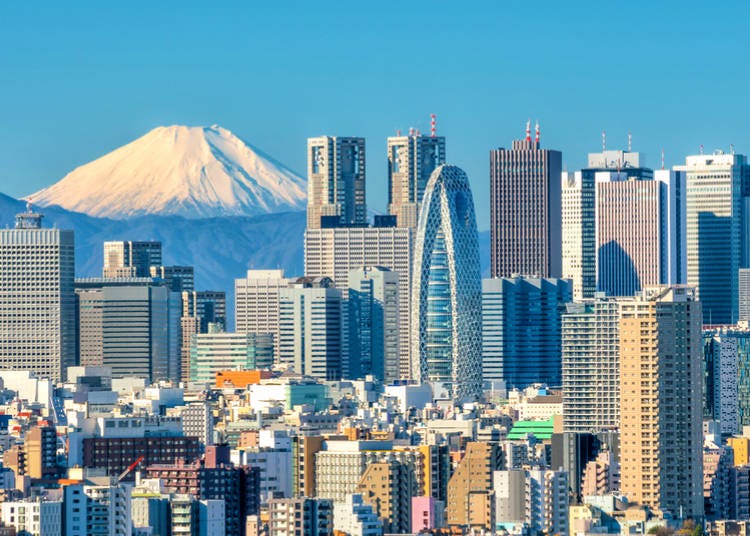
Tokyo's winter may be chilly, but what we get in return is crystal clear skies which allow for fantastic views of the city skyline—and possibly of Mount Fuji if you get to the right vantage point. The sunny skies and cool, crisp air can also give the winter days a wonderful kind of alpine feel. It's the perfect time of year to make your way up one of Tokyo's tallest buildings, and stand in reverence of the andesite and basalt behemoth that is Mount Fuji, it's snow-tipped peak looming over the city like some sort of volcanic deity.
Tokyo Skytree is the largest free-standing tower in the world. Located in the northern district of Oshiage, the higher of its two observation decks provides one of the best panoramic city views in the world. Better yet, on a clear day you'll get a fantastic view of Japan's most famous mountain.
Tokyo Tower is the red and white, Eiffel Tower-esque building that has become the centrepiece of the classic Tokyo cityscape postcard image. Until Skytree's completion in 2011 it was Tokyo's tallest building for over 50 years. Located in the downtown area of Roppongi (which is super popular with tourists), it also boasts a fantastic view of the city and beyond.
9. Skiing and Snowboarding
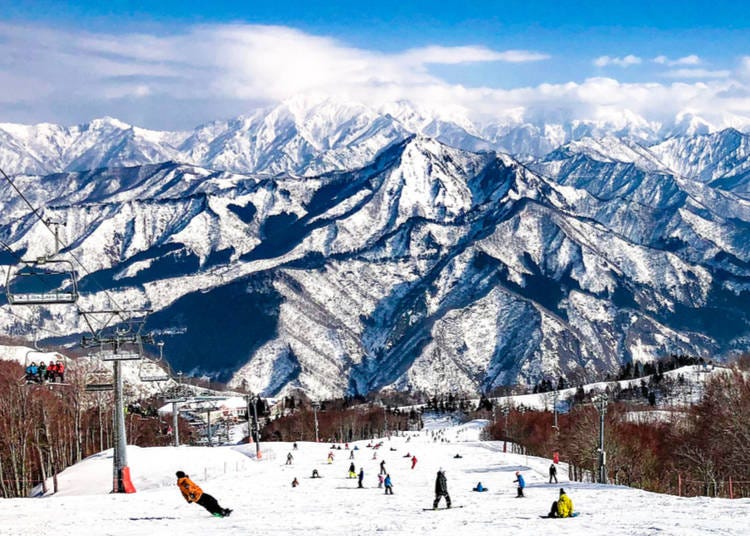
Japan has some of the best ski and snowboard slopes on the planet and in the winter months the country's mountainous regions turn into a true powderhead's paradise. It should come as no surprise that within Tokyo's low-lying reaches you shan't find any ski resorts. But, 8 of Japan's 10 largest resorts are located on the island of Honshu, meaning that most of them are only a hop, skip and a shinkansen away.
These include:
・Shigakogen Mountain Resort in Nagano. This behemoth has a whopping 83km worth of runs and an elevation of well over 2000m, dwarfing every other resort in Japan when it comes to size.
・Happo One Hakuba. Also located in Nagano, this resort is the second biggest in Japan. While it doesn't quite match Shigakoen for size, it still boasts a healthy collection of blue, red and black runs.
・Zao Onsen Resort. Located in Yamagata Prefecture Zao Onsen Ski Resort is easily one of the prettiest around. It's also not too far from the nearby city of Sendai, which is a hidden gem in the north of Japan's main island.
10. Off-season
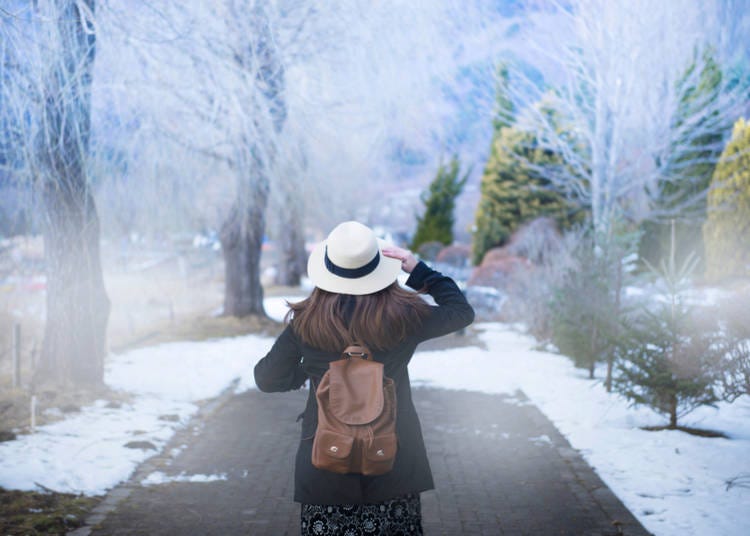
It is no secret that Tokyo is one of the world's busiest cities. With a population of nearly 40 million people crammed into the metropolitan area, and increasingly large swathes of tourists flocking to the capital each year, it should really come as no surprise. Yet, winter (particularly January and Febraury) is low season for Japan's tourism sector, which results in considerably smaller crowds in Tokyo. Want to get some sightseeing in? Or book a meal at fancy restaurant? Maybe you just want to go for a nice walk, or a gentle hike? Whatever your inclination, if you want to avoid the crowds then winter is the best time to indulge in your favorite Tokyo activities. So, wrap up in some weather-appropriate clothing and enjoy!
Extra note: Not only are the crowds smaller in many areas, but the hotels and flights can be significantly cheaper. Tokyo has a reputation for being expensive, but getting here is actually half the battle. If you're a budget traveler, definitely consider coming in winter. It's a truly spectacular time of year to enjoy Japan's vibrant capital city, and you can save yourself a bit of cash in the process!
Main image: Kawinphat Warattheerachot / Shutterstock.com
David is a Northern Irish freelance writer living in Tokyo. He loves living in Japan, reading about Japan, writing about Japan and eating Japanese food. He also spends a lot of time exercising, playing rugby and risking a litany of muscle-related injuries in yoga class.
- Area
- Category
*Prices and options mentioned are subject to change.
*Unless stated otherwise, all prices include tax.
Popular Tours & Activitiess
Recommended places for you
-

The Imperial Palace
Other Architecture
Tokyo Station
-

Naritasan Shinshoji Temple
Temples
Narita
-

TOKYO SKYTREE®
Landmarks
Ryogoku / TOKYO SKYTREE(R)
-

Ueno Zoo (Ueno Zoological Gardens)
Zoos, Aquariums & Botanical Gardens
Ueno
-

The Tokyo Station Marunouchi Building
Landmarks
Tokyo Station
-

Tokyo Tower
Landmarks
Roppongi
-

2025 Japan Autumn Color Report: Tokyo's Ginkgo Trees Starting to Glow
by: Timothy Sullivan
-

A Travel Game Changer! Go Hands-Free Between Tokyo and Kyoto with LUGGAGE EXPRESS by JTB and JR Tokai
by: Guest Contributor
-
Ad

Walk in the Footsteps of Believers: A 4-Day Pilgrimage Across Goto Islands, Nagasaki Prefecture
by: Yohei Kato
-

Get Ready to Catch 'Em All! First Ever Permanent Outdoor Pokémon Park Opening Near Tokyo!
-

2025 Autumn Colors Report: Kurobe Gorge Nearing Peak
by: Timothy Sullivan
-

See Asakusa and Tokyo Skytree® in a New Light at the "Také Akari" Festival (Winter 2025-2026)
by: Guest Contributor
Inspiration for Accommodations
-

Enjoy Mt. Fuji from the Comfort of Your Room! Recommended Ryokan with Mt. Fuji View
-

Stay Near the Cherry Blossoms! Hotels for Cherry Blossom Viewing in Tokyo
-

Family-Friendly Hotels with Free Shuttle to Disneyland: Convenient Access for a Magical Stay
-

Top Ranked Hakone Hotels with Mt. Fuji View: Enjoy Stunning Scenery from Your Private Space
-

Convenient Tokyo Hotels with Airport Shuttle: Ideal for Families and Heavy Luggage
-

Stunning Tokyo Tower View Hotels: Enjoy Spectacular Scenery from Your Private Space
-

Convenient Asakusa Hotels with Kitchens: Ideal for Extended Family Visits
-

Experience Luxury: Hakone's 10 Best Five-Star Accommodations
-

Enjoy Mt. Fuji Autumn Leaves! Top Hotels Near the Popular Autumn Leaves Corridor
-

Experience Hakone Fall Foliage from Your Room with Stunning Views
-

Exploring Tokyo: 4 Must-Visit Spots around Tokyo Station
-

Japan Winter 2025: National Holidays, Seasonal Festivals & Must-See Spots
by: Chien-Huang
-

Exploring Tokyo Station: 11 Must-Visit Spots Around the Heart of Tokyo
-

7 Best Winter Events in Tokyo: Chilly Evenings, Shiny Holidays (November/December)
-

Winter Sightseeing in Tokyo Done Right: What to Know and What to Bring
-

(Video) Walking Tour along Narita Omotesando - Quaint Historical Village near Narita Airport!
by: Victor Gonzalez
- #best ramen tokyo
- #what to buy in ameyoko
- #what to bring to japan
- #new years in tokyo
- #best izakaya shinjuku
- #things to do tokyo
- #japanese nail trends
- #what to do in odaiba
- #onsen tattoo friendly tokyo
- #daiso
- #best sushi ginza
- #japanese convenience store snacks
- #best yakiniku shibuya
- #japanese fashion culture
- #best japanese soft drinks













